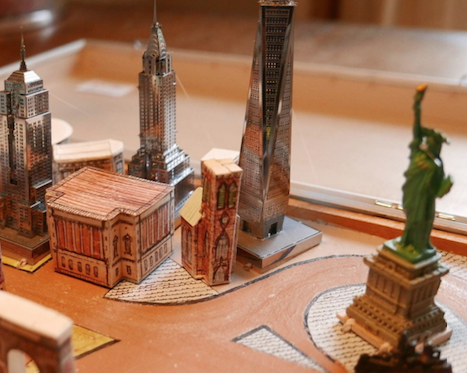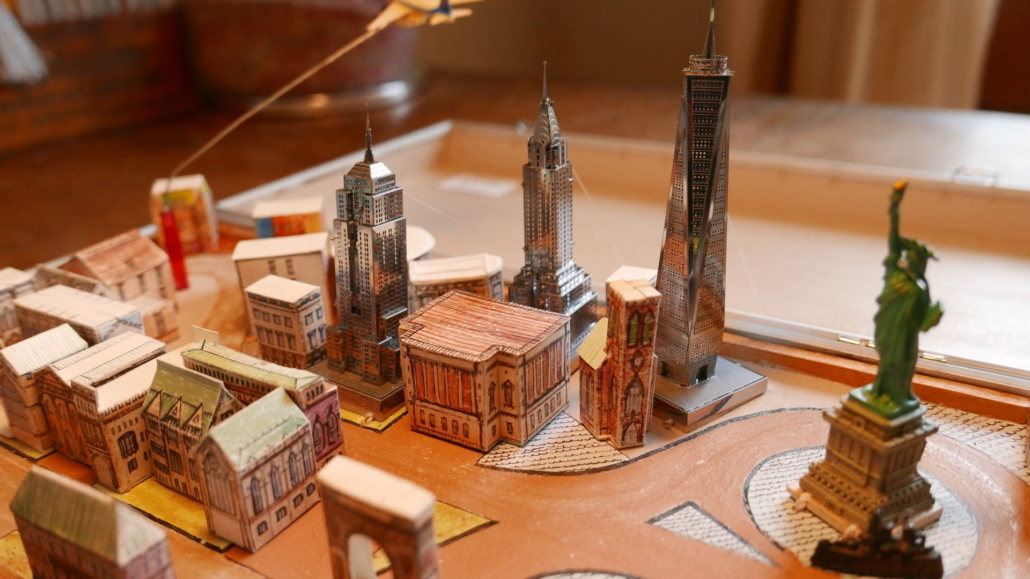
NEW YORK — Myles Zhang has been making architectural models by hand since he was a boy, first out of building blocks and then paper, with his models becoming increasingly complex as time went on. The New Jersey native is a graduate student at Cambridge University who uses architectural models in his classes and in architectural history seminars. He primarily makes models for his own personal enjoyment, though.
“Models are a dynamic way to engage with space. The building’s floor plan or cross-section shows what a space looks like from an impossible angle — slicing the structure through or viewing from a God-like perspective above,” he said. “But, the model you hold in your hands is something more physical and real. I can look around it, imagine myself walking through it, and get a clearer picture of what this would look like if built full-scale in real life.”
Collectors of architectural models share this same passion and seek out examples from certain architects — Frank Lloyd Wright models are popular with collectors and bring strong prices — or from certain cities. Acquiring models embodying a particular architectural style are also a way to create a focused collection.
Among institutions avidly collecting architectural models are museums like The Getty Research Institute in Los Angeles, Calif., which has made collecting working models a priority, as they offer insights into the design process for specific projects.
“Since the 1980s, the Getty Research Institute (GRI) has built an outstanding collection of drawings, architectural models, photographs, architects’ papers, and rare books. The collection is especially strong in 20th-century European modernism and postwar California architecture,” says a blog on the institute’s website. Among the standouts in its collection are “Open House” by the architectural firm of Coop Himmelb(l)au, 1983; and the Gould/LaFetra House made in 1966/1968 by Ray Kappe.
In London, Sir John Soane’s Museum encompasses the house, museum and library where the famed architect once lived. It includes a major collection, for educational purposes, of his drawings, architectural models and more. The Model Room has a display of cork and plaster architectural models that represent many of the most famous monuments of the ancient world, along with Soane’s own commissions.
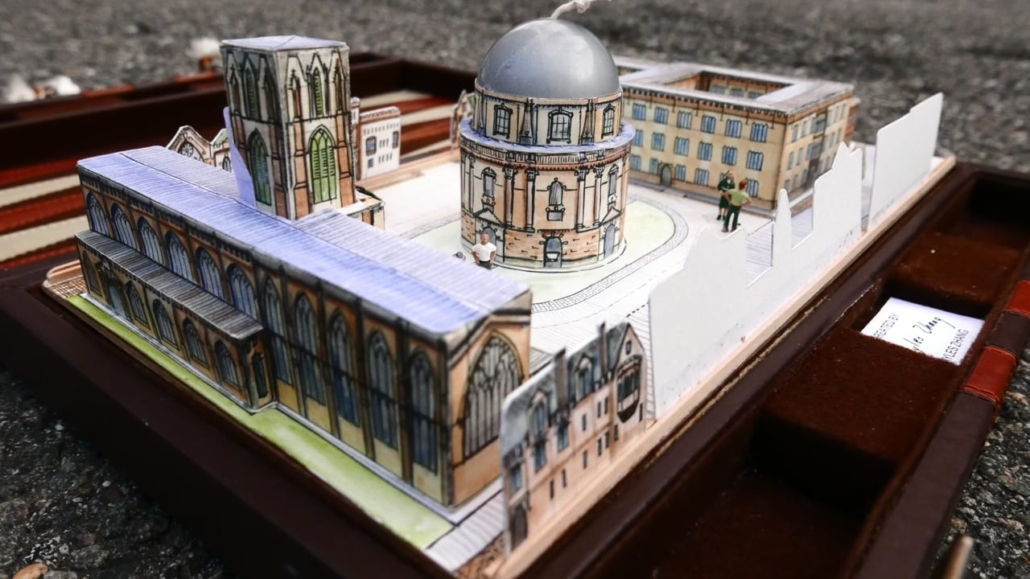
Owing to their delicate construction and materials, architectural models require careful storage and sometimes will need conservation. Common materials used in architectural models include wood, paper, foam core board, metal pins, and pressure-sensitive tape. Most conservators aim to keep the model’s original design intact and make repairs as necessary but never strive to make a vintage model look new again.
Growing up and living in urban environments, Zhang witnessed both the preservation and demolition of historic neighborhood buildings. He vowed to make models of places important to him, and so far his models include his childhood neighborhood of Newark, N.J., New York City and the university campuses of Columbia and Oxford, where he did his undergraduate work. “Models retain a human touch in an era where experience of the world is increasingly digital and mechanical,” he said. “I often build models and animate them to illustrate the construction sequence of particularly complex structures.”
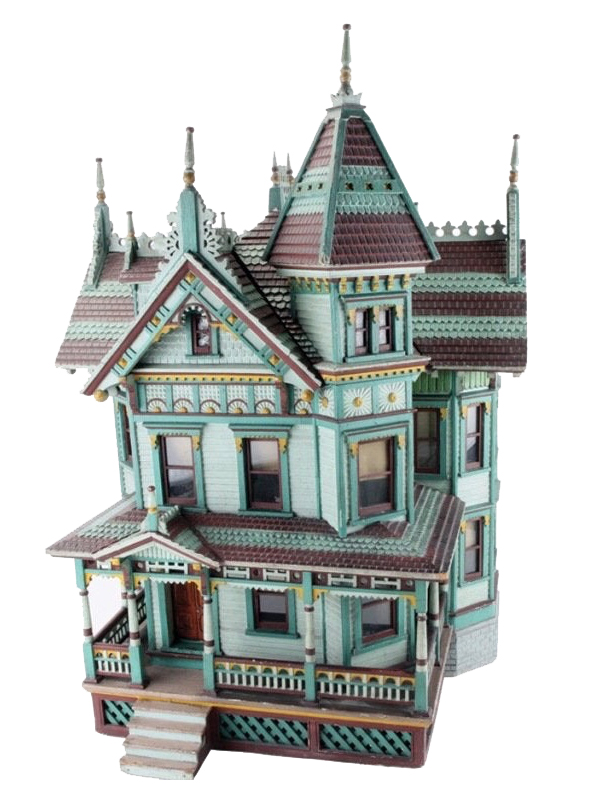
In a blog on The Victoria & Albert website, Dr. Simona Valeriani, principal investigator of the Architectural Models Research Network, noted the staggering diversity and variety of architectural models. From models of historic buildings or great architectural landmarks to city skyscrapers and family homes destroyed by fire, models come in all shapes and styles.
Models can be working/sketch models or presentation models to show off a finished project. Model types include interiors (showing space usage, colors and furniture placement), exteriors or urban models. The latter examples are usually made in a tiny scale and depict a larger city section or town, instead of just one building.
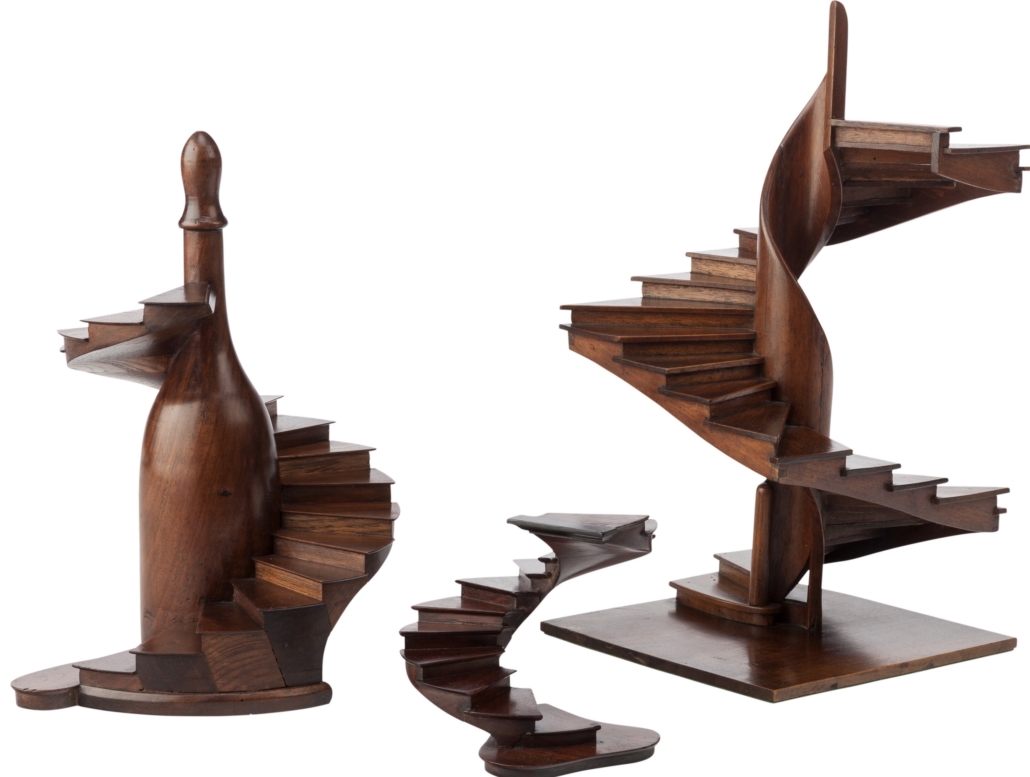
A lot of three Edwardian oak architectural spiral staircase models made $7,500 at Heritage Auctions in September 2014. Photo courtesy of Heritage Auctions and LiveAuctioneers
“Some are almost poetic in nature, suggesting in evocative ways the intentions of a project on an urban scale, or the playful nature of the interior…,” Valeriani wrote.
With the business world now fully entrenched in the digital era, there is little surprise that architecture is increasingly turning to digital models instead of 3D models. While many architects still make traditional models, digital models and virtual reality representations are becoming standard in representing architectural design through complex algorithms and calculations.
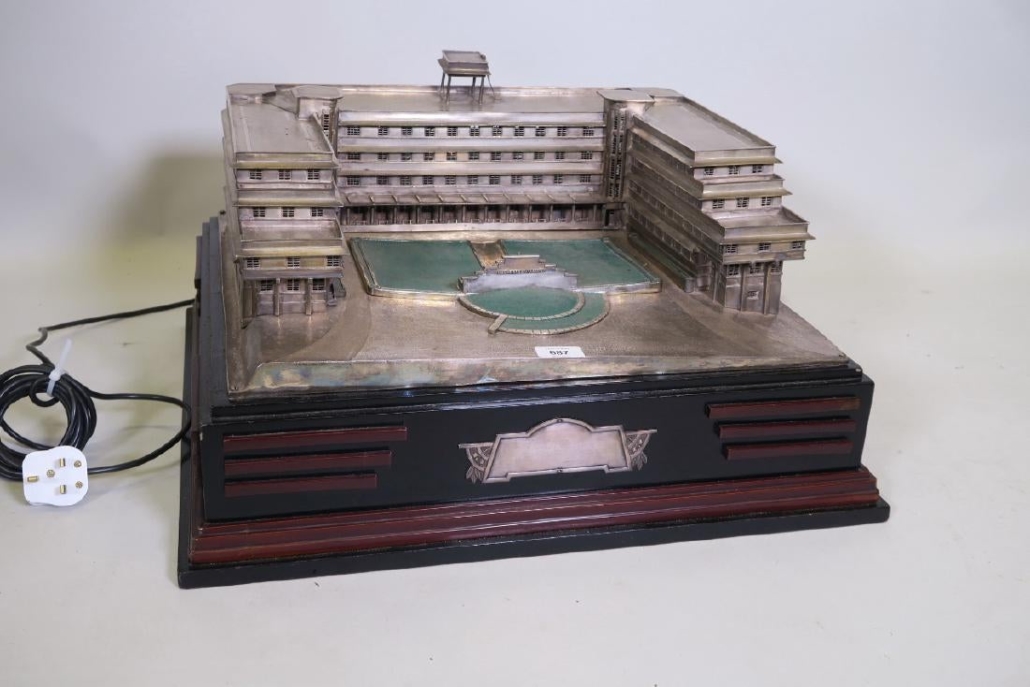
Vintage and antique architectural models thus are becoming even more collectible, with the best examples bringing thousands of dollars, into the low five figures. Models of famous buildings are especially coveted as well as models representing buildings designed by renowned architects.
# # #


